Men’s Journal aims to feature only the best products and services. If you buy something via one of our links, we may earn a commission. Prices are accurate and items in stock at time of publishing.
If you’ve been squatting heavy for the better part of a decade or shaving seconds off your marathon time year after year, chances are your knees have paid the price. Persistent patellar pain, creaky joints, and tendonitis are familiar pain points for lifters and endurance athletes alike. Sure, workout recovery tools like foam rollers, massage guns, and compression sleeves promise relief, but few actually fix the root cause.
Enter Ben Patrick, aka Knees Over Toes Guy, and founder of Athletic Truth Group (ATG). Instead of preaching rest and avoidance, Patrick flips the script: His training philosophy, shared across social media, centers on strengthening the knees through full range-of-motion exercises like reverse sled pulls, ATG split squats, and tibia raises. The goal? Build bulletproof knees that not only handle impact but thrive under it.
“Knees over toes was a broadly misunderstood subject, and my dedication to making it safe and simple has arguably resulted in the most knee success stories—ever,” he says, with the likes of Henry Cavill and Sam Heughan among his loyal backers.
Knees Over Toes Guy’s Formula for Stronger Knees
Directions
These exercises can be scaled to all abilities. Do each at least once per week, adding to body part-specific or full-body routines for a balanced program, and less pain. Perform exercises as supersets, when noted.
Skill 1: The Knee-Saving Benefits of Sled Pulls
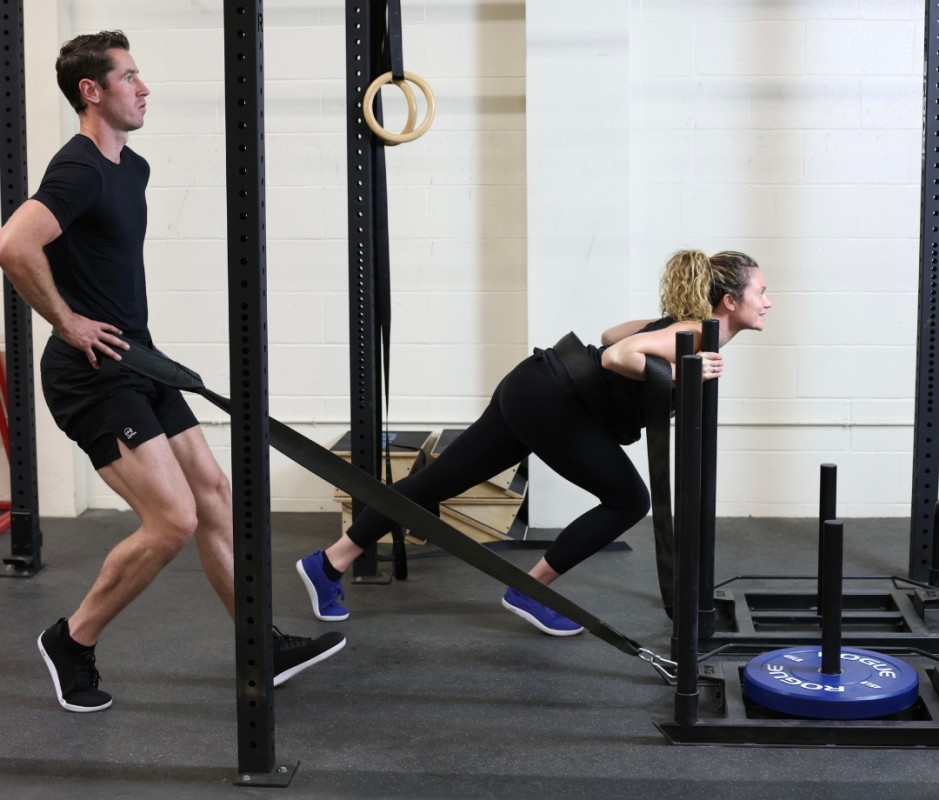
Forrest Conner
Why It Works
Walking and running are fundamentals of cardio, and taking those movements and reversing them is essential for rehab. The better you move backward, the more capable you are of moving forward. Studies show backward training reduces the overall impact and compressive forces on the knee joints, bulletproofing your lower body.
Backward Sled Pull
How to Do It
- Load a sled with light-to-moderate resistance, to start.
- Attach a sled pulling belt and position against your lower back.
- Walk backwards, “reaching” lead foot back, then driving through ball of foot to propel each step at whatever pace feels good.
- “The load isn’t bearing down on you, so you can exercise vigorously with stunningly low risk,” Patrick says.
- Repeat for four sets of 100 yards.
Forward Sled Push
How to Do It
- Going forward with the sled puts your knees even farther over toes, strengthening your feet and lower legs to a greater degree.
- Place hands on high poles, hips hinged forward slightly. With back straight and core engaged, drive through balls of feet and push sled with small, slow steps.
- Don’t have a sled? Alternate 100 yards forward and backward walking on a football field for four rounds.
- Repeat for four sets of 100 yards.
Skill 2: Downhill Strength Made Simple
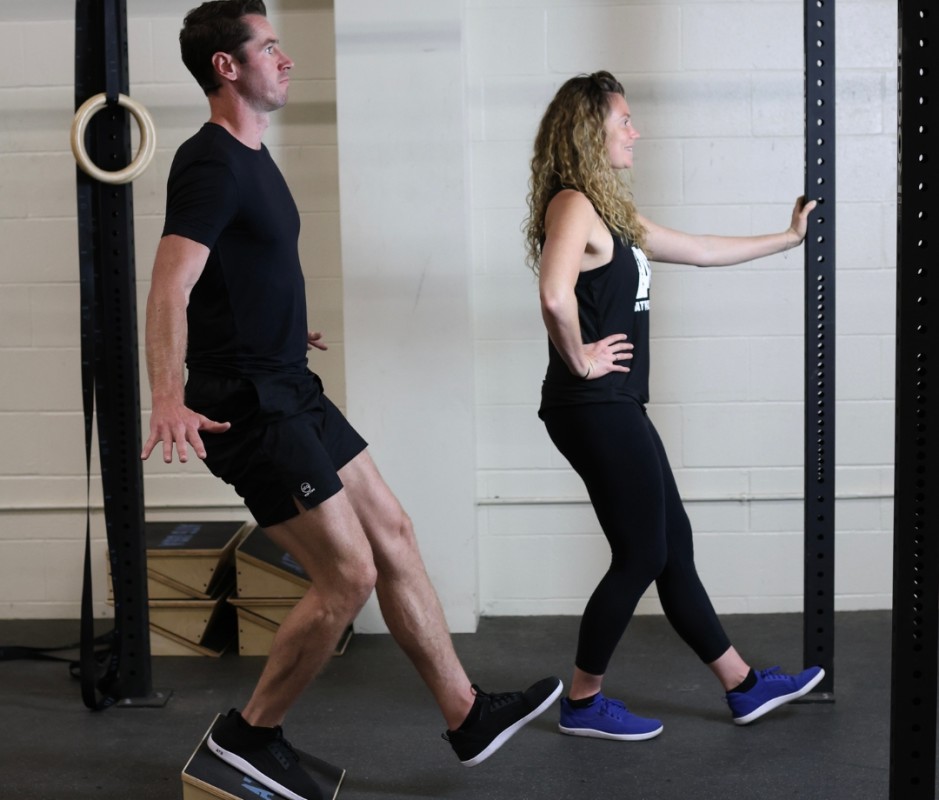
Forrest Conner
Poliquin Stepdown
How to Do It
- Use a slant board, or place a wedge on top of a step or weight plate four to six inches off the ground, to start.
- Beginners, start out assisted, holding something for support; intermediate, go unassisted with bodyweight; advanced, hold dumbbells.
- Place right foot on slant board with left leg hanging off platform, foot flexed.
- Bend right knee to lower left leg, tapping heel to ground, then drive up to start.
- Complete two sets of 25 reps on each side.
Related: Knees Over Toes Exercises: The 10 Commandments of Healthy Joints
Skill 3: Full-Range Squats to Bulletproof Your Knees
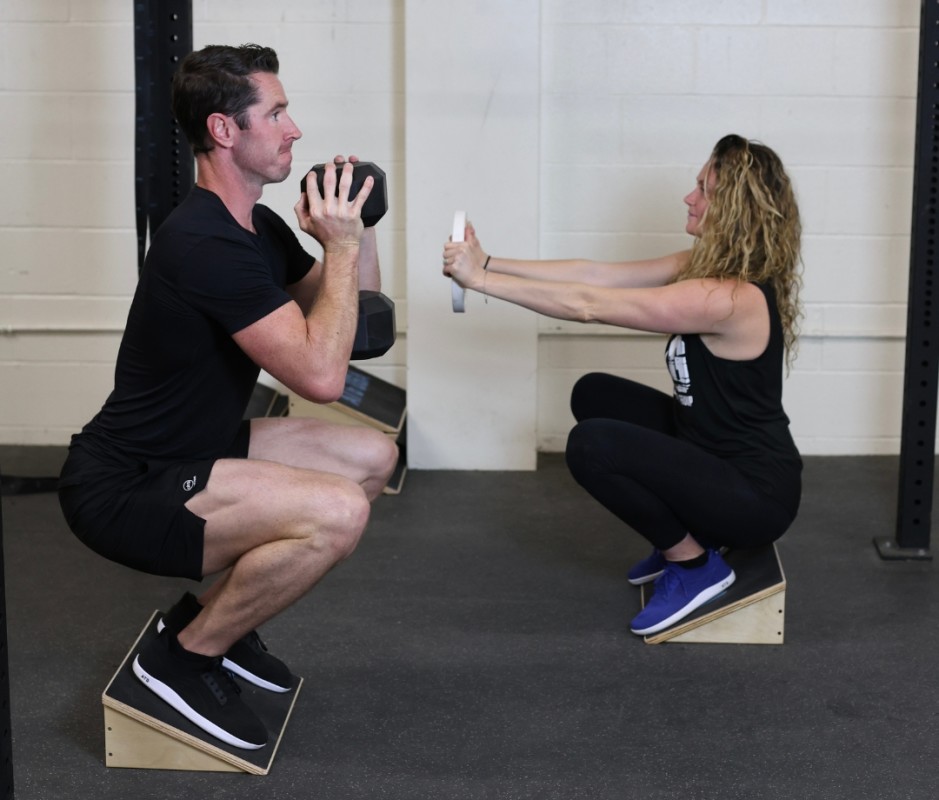
Forrest Conner
Why It Works
By elevating heels on a slant and holding weight in front for counterbalance, people with knee pain can sink deeper into a squat with less discomfort, because this shifts the center of gravity. Over time, this restores ankle mobility and knee flexion tolerance. “A slant board is the most bang-for-buck knee tool,” Patrick says.
Dumbbell VMO Squat
How to Do It
- Stand slightly wider than hip-width with feet on wedges to elevate heels, holding a dumbbell in the goblet position.
- Slowly lower for a count of five, knees generating outward force until in a deep squat, hamstrings touching calves.
- Pause at the bottom, then drive up.
- You’ll feel this in the inner thighs and VMO (tear-drop-shaped quad muscle).
- Start with bodyweight, if needed. Go heavier to progress.
- Perform three sets of five reps.
Skill 4: ATG Split Squat for Strong, Flexible Knees
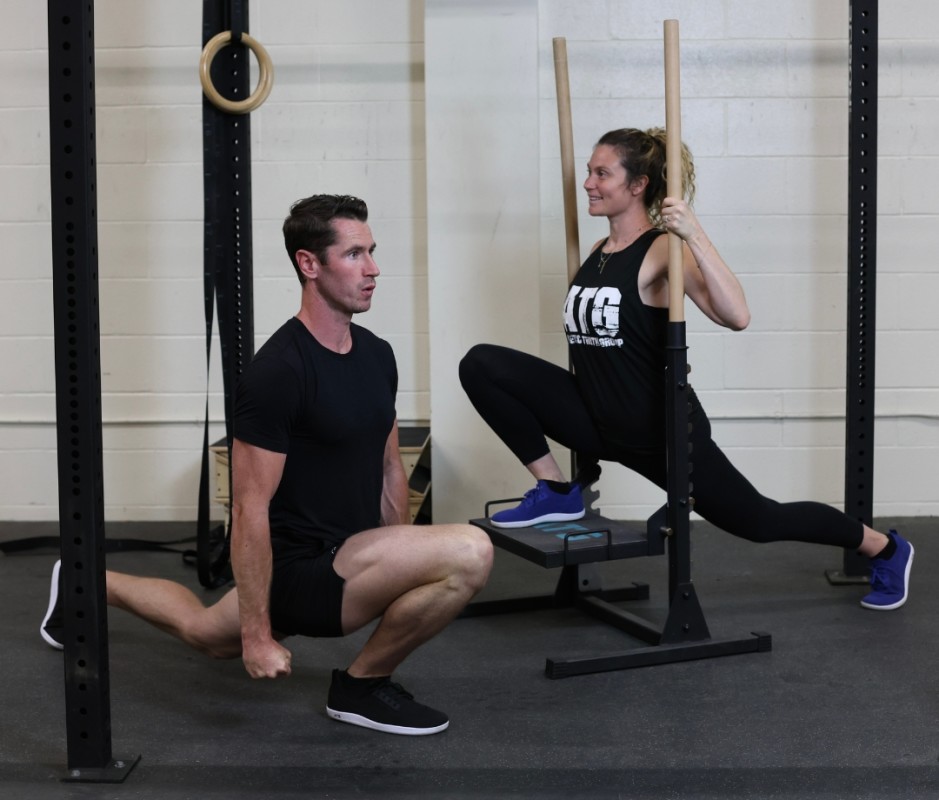
Forrest Conner
Why It Works
Strength training in a lengthened position boosts resiliency. It’s Patrick’s coaching “antidote” to desk jobs. In the instance of a split squat—a core exercise in his ATG program—you work ankle mobility and knee strength in the front leg, and hip flexor flexibility in the back leg. The deep hip flexor stretch and ankle dorsiflexion under load eases tightness with consistent practice. “The higher the front foot, the easier the strength and flexibility [demand],” he explains.
How to Do It
- Place left foot on wedge atop weight plate and step right foot far back into an exaggerated split-squat position, heel lifted.
- Keep chest tall and back straight as you bend left knee to lower into a deep split squat.
- The goal: get back of hamstring to touch calf for full range of motion.
- Switch sides on each set. Make it easier by elevating your front foot on a step or box and/or add assistance.
- Perform two sets of 10 reps on each side.
Skill 5: Protect Knees and Build Low-Back Strength
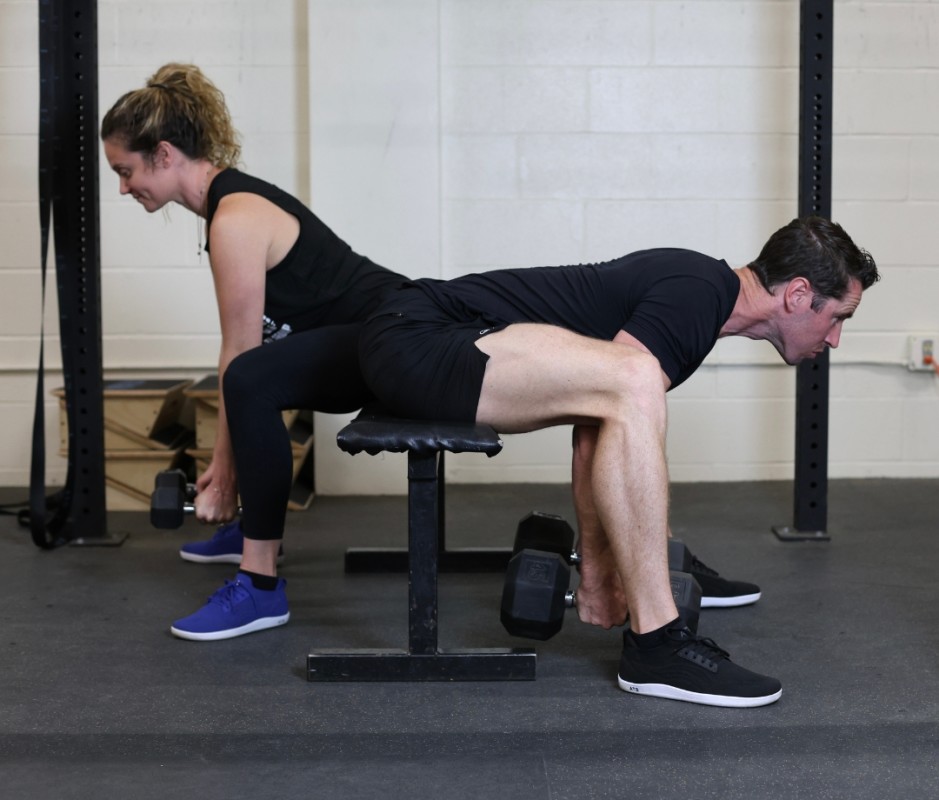
Forrest Conner
Why It Works
“The low-back pain epidemic isn’t a problem in strength or flexibility, it’s both,” Patrick says. This move stretches and mobilizes the ankles, knees, and inner thighs, while strengthening the lower back. It also teaches a proper hip hinge pattern. Superset with ATG split squat.
Seated Dumbbell Deadlift
How to Do It
- Sit on the end of a flat bench with feet planted on either side, farther away from your body than your knees.
- Hold a pair of dumbbells with straight arms or an empty bar across your traps.
- Hinge at your hips, keeping a proud chest and long spine, as you lower torso to thighs.
- Reverse the motion to sit upright.
- Complete two sets of 10 reps.
Skill 6: Hamstring Work That Reduces Knee Pain

Forrest Conner
Why It Works
Strengthening the muscles behind the knee bolsters the joints and provides better shock absorption, reducing instances of instability and pain.
Single-Leg Hamstring Curl
How to Do It
- Lie on your back with feet shoulder-width apart, heels on sliders, a Swiss ball, or glute bridge roller.
- Bridge hips off ground, then raise one foot off the ground, knee bent and foot flexed.
- Dig working heel toward your body, bending at the knee.
- Pause, then push back out so your leg is now straight.
- Start with both legs at two by 10 reps, then scale up to two by five reps each side using both legs to curl up, then lower down with one.
- Work up to two sets of 10 reps on each side, moving unilaterally (one leg at a time).
